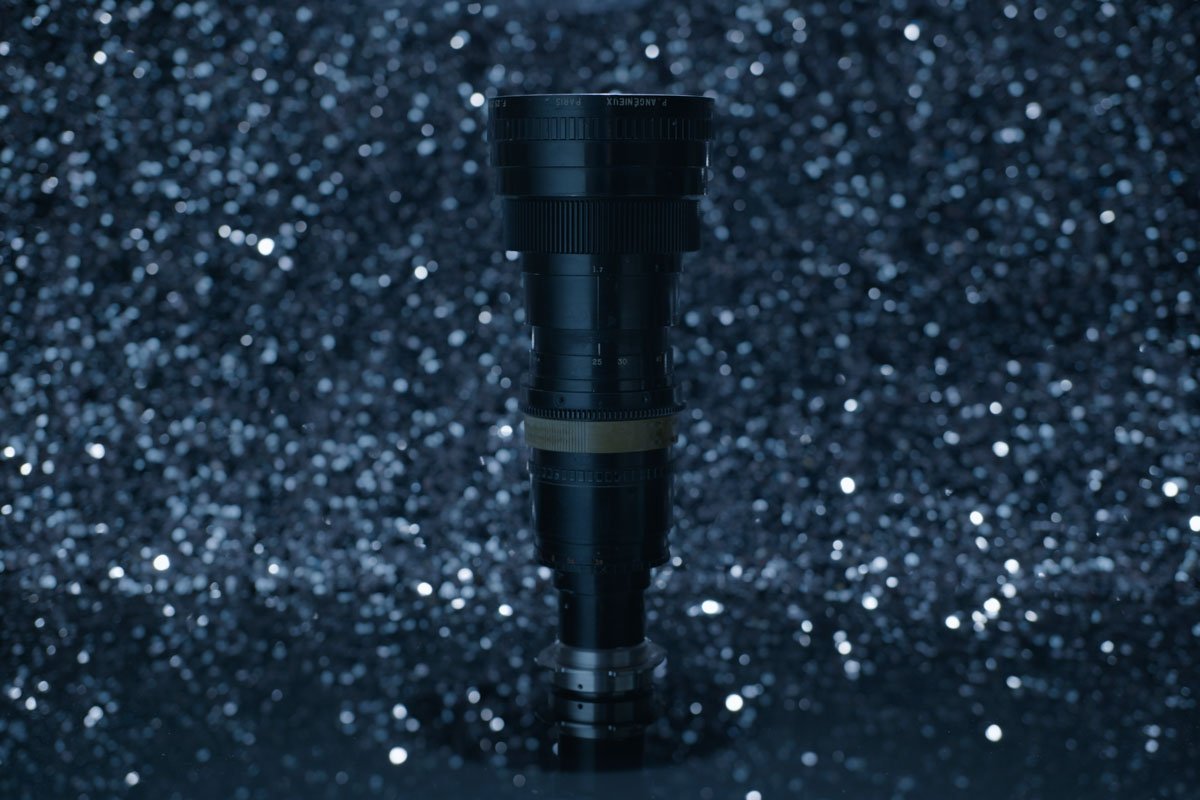Zoom Angénieux 25-250 HP
The Angénieux 25-250mm HP (High Precision) zoom lens holds a significant place in cinematic history. Renowned for its versatile focal range and optical excellence, this lens has been cherished by filmmakers and cinematographers for decades. It is a product of Angénieux, a name synonymous with precision and innovation in the world of cinematic optics. This lens's enduring legacy is deeply rooted in its consistent performance and adaptability for capturing a wide range of shots, making it an iconic tool in the cinematic industry.
Quoting The “Cine Lens Manual” available at our offices :
In 1962, the second Super 35mm zoom lens produced by Angenieux was the original 25-250mm (10:1) T3.9 zoom. This improved design featured mechanical compensation for breathing. Panavision purchased many 25-250mm and "Panavised" them by converting to PV mount and calling them the APZ (Angénieux Panavision Zoom).
Director Sidney Lumet was one of the first in Hollywood to embrace the Panavised Angénieux on Fail-Safe (1964, c. Gerald Hirschfeld, ASC), Haskell Wexler, ASC won the Academy Award in 1967 for In the Heat of the Night , which used the zoom extensively. It was also used on Bonnie and Clyde (1967, d. Arthur Penn, c. Burnett Guffey, ASC), which was nominated for Best Director and Best Picture Academy Awards and earned Guffey the Oscar for Cinematography.
The lens was also famously used on director Sergio Leone's "Dollar Trilogy," starting with A Fistful of Dollars, For a Few Dollars More, both shooted by Massimo Dallamano and The Good, the Bad and the Ugly, in addition to Once Upon a Time in the West filmed by Tonino Delli Colli.
The 10:1 Angénieux zoom was also embraced by directors Francis Ford Coppola on The Godfather (1972, c. Gordon Willis - Best Picture Academy Award), William Friedkin on The French Connection (1972, Best Picture Academy Award) and The Exorcist (1973) both photographed by Owen Roizman, and Steven Spielberg on Jaws (1975, c. Bill Butler). In fact, it was the anamorphically Panavised Angénieux 10:1 zoom that created the famous dolly zoom shot on actor Roy Scheider on the beach in that film.
In 1964, Angénieux lenses went to the Moon on the NASA Ranger VII. The following year, Pierre Angénieux received an Academy of Motion Picture Arts and Sciences' Scientific and Engineering Award for "the development of the 10:1 zoom for cinematography." And although throughout the next decade 15 other zoom models for 35mm cameras would be released by Angénieux, the venerable 25-250mm would not receive an update until 23 years after its introduction with the 25-250mm HP (High Performance) in 1985, which is still an fi3.2 design, but improvements were made to its coatings, which increased its transmission performance to a T3.7. A scant six years later, in 1991, the 10:1 was improved once again with the introduction of the 25-250mm HR (High Resolution) - also still an fl3.2 design - but now boasting a Т3.5 rating.
Tech Specs
Samples
Music Video - Juicy - See Me Now








